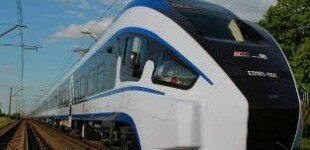Stadler sells its first bi-modal FLIRT

On Mai 12th, the Valle d’Aosta Region of north-west Italy awarded Stadler Rail a contract worth approx. EUR 43 million for five bi-modal trains (BMU) able to operate in Diesel mode or under 3 kVDC catenary, for the interregional passenger service between Aosta and Torino. The bi-modal trains, of the newest FLIRT3 generation, will be delivered in 2018.
The new FLIRT3 which is compliant to the newest TSI Norms and standards, thanks to its modular design, will cover the full range of possible EMUs, DMUs and BEMUs train configurations, allowing each customer to personalize the train with the needed functionalities and operational features, being those for EMUs, DMUs or, like in case of Region Valle d’Aosta, for bi-modal trains.
The contract includes staff training, technical documentation, spares and a full-maintenance contract for five years. There is an option for a further five trains (to be taken up within 36 months from delivery of the last train) and extension of maintenance for a further three years, which would take the contract to aprrox. € 94 MEUR.
As with all FLIRT trains, they also include the following features as standard: spacious, transparent interior design, large multi-purpose spaces in the entrance areas and vehicle bodies made from lightweight aluminum, leading to significantly lower energy consumption and thus also substantially lower energy costs. The three-car trains are equipped with 178 seats, out of which 19 are tip-up seats; the trains have a maximum speed of 160 km/h in E-mode and 140 km/h in D-mode. A spacious toilet, compliant with TSI-PRM requirements, is positioned in the middle of the train.
Each train unit consists of 3 passenger cars and an intermediate Diesel PowerPack Module; a fourth car may be added at a later stage, in case of future increase of transportation needs. The FLIRT3 carbodies are constructed from a strictly specified aluminum alloy and the manufacturing process is based on Stadler’s proprietary and extensively service-proven integral construction method.
Considerable attention has been given to all aspects of maintainability and maintenance requirements; all components of the traction system are cleverly and ergonomically positioned in an orientation and manner that makes them easily accessible through hatches or doors. The traction equipment for the three-car bi-modal train has a maximum delivery power capacity of 2’600 kW in electric mode, under 3kV catenary and of 700 kW in Diesel mode. Thermal-power is delivered by two state-of-art 8 cylinder and common-rail Diesel engines, compliant with the EURO IIIB emission regulations.







There are no comments at the moment, do you want to add one?
Write a comment